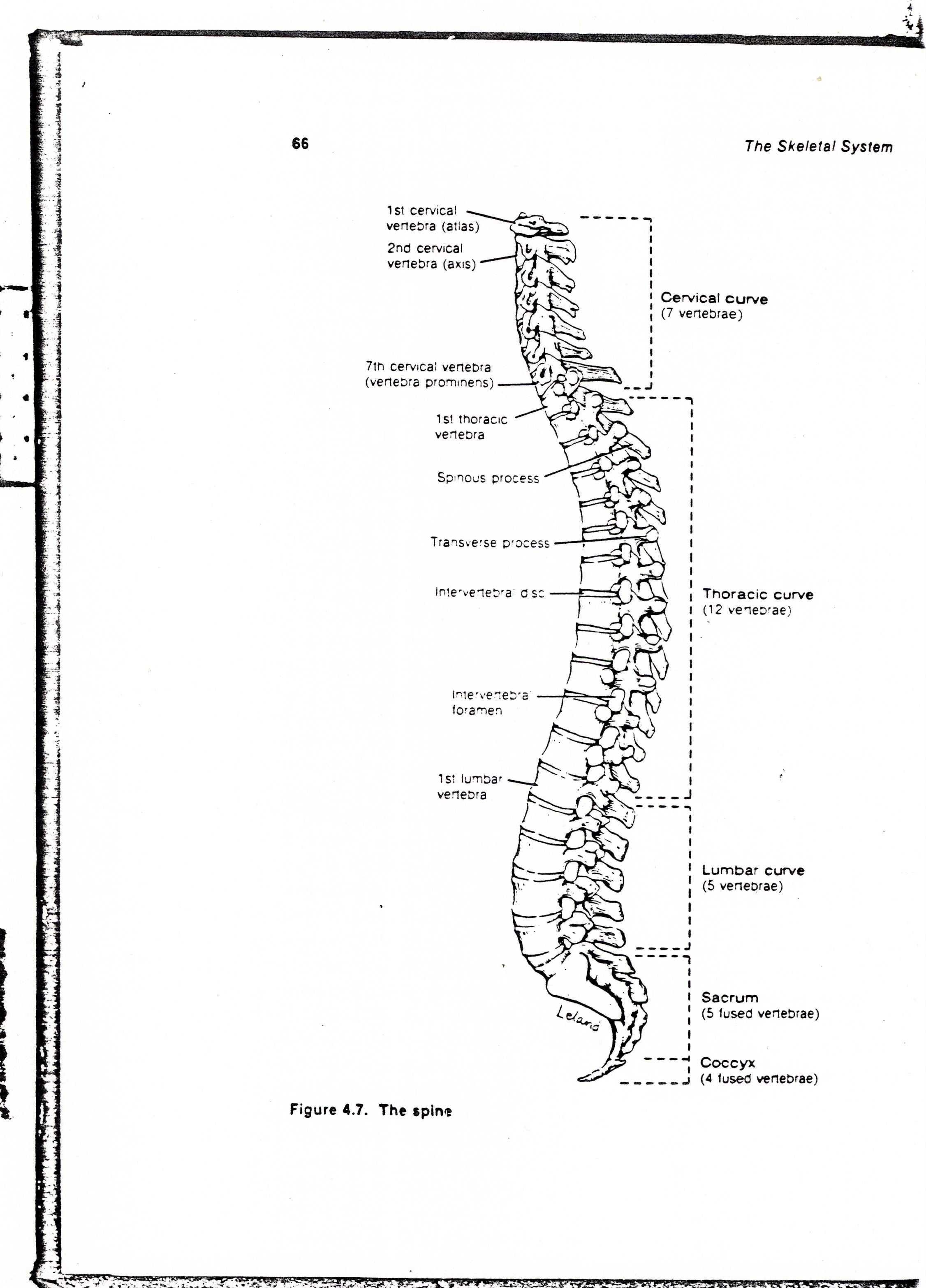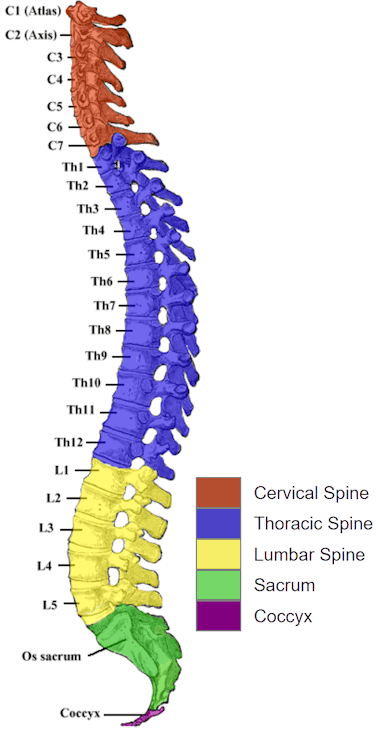

The thoracic vertebrae, as a group, produce a kyphotic curve. The intervertebral discs, along with the laminae, pedicles, and articular processes of adjacent vertebrae, create a space through which spinal nerves exit. The thoracic region contains 12 vertebrae, denoted T1-T12. The intervertebral discs are responsible for this mobility without sacrificing the supportive strength of the vertebral column. The spine has several major roles in the body that include: protection of the spinal cord and branching spinal nerves, support for thorax and abdomen, and enables flexibility and mobility of the body. It extends from the skull to the coccyx and includes the cervical, thoracic, lumbar, and sacral regions. For those who are teaching about the human spine, having a proper PowerPoint diagram will help immensely to the understanding of how the human spine is structured.Vertebrae, along with intervertebral discs, compose the vertebral column or spine. This allows for the visualization of the vertebral column and all its complexities which can be absorbed at once. To fully explain spine anatomy, having the proper human spine diagram is an excellent place to start. Finally, the coccyx consists of four fused bones that create the vestige of the tailbone, but also connects muscles and ligaments to the floor of the pelvic area. You can find the ring that creates the pelvic girdle here. The sacrum connects the spine to the hip bone with the vertebrae being fused together. The vertebrae are larger which allows for stronger muscles to provide support while carrying objects that are heavy or awkward.

Lumbar: The lower back area is also subject to the most stress since it supports the weight of the body. There is not much range of motion in this part of the spine. Thoracic: This section supports and helps protect the rib cage along with providing protection for the vital organs found in the chest cavity. The first vertebrae (C1) is connected to the skull and is ring-shaped, while the second (C2) is an axis that allows the head to move about. FunctionsĮach major section of the spine has responsibilities in terms of support, being shaped and held up by the surrounding muscle groups to do a specific job.Ĭervical: The major role the cervical section of the spine plays is to support the head. Weakened muscles and excess body weight, especially around the torso, can cause abnormal curves in the spine which least to more serious issues. Good posture when sitting and walking also helps to keep the alignment proper which reduces the strain on the muscles surrounding the spine. The cervical, thoracic, and lumbar sections keep their shapes based on the strong muscles that are present around the spinal column. The spine is divided into five separate sections as you can see in the diagram with the three major sections being defined by the curves.Īt the bottom of the spine are two small sections, the Sacral followed by the Coccyx, which is the vestige of the tailbone found in most primates. However, it is also true that back pain and back ailments are the most common complaint in medicine. The shape is quite beneficial because it helps to absorb shock and lower the chance of injuries. The first thing you will notice is that a normal human spine is “S†shaped, meaning that there are three curves which create the appearance of the letter “Sâ€. The different sections of the spine are all broken up with lines, and the lines are labeled in order to make it simpler for your students to take notes. The Anatomy of the Spine PowerPoint Diagram comes with one PowerPoint slide that is totally customizable, letting you choose how you want to break up the different sections of the spine and show them to your students using color. By using the Anatomy of the Spine PowerPoint Diagram, you can clearly label the different parts of the spine in order to make it easier for your students to understand.


 0 kommentar(er)
0 kommentar(er)
